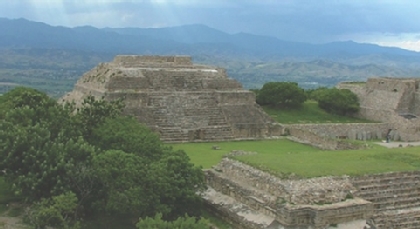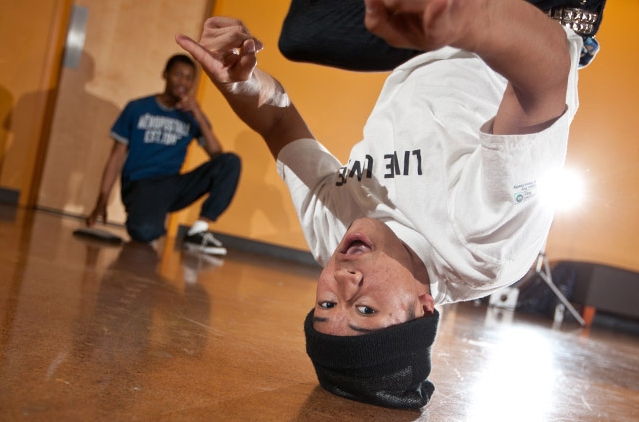Page 21 • (236 results in 0.067 seconds)
-
Next of kin: the ethics of eating, capturing, and experimenting on great apes One of the pressing problems of our times is the future of the great apes. All of the great apes – chimpanzees, bonobos, gorillas and orangutans – are endangered. Their habitat is…
in Africa and the conditions faced by captive chimpanzees in the United States. Lindsey reports on her experience last summer in the following way: “As a student of philosophy, I’ve read many of the influential sources of historical and contemporary human arrogance. According to many ancient and modern thinkers, humans are different in kind from all other animals on earth. Along the way we have distinguished ourselves in many ways, not the least of which is the ability to use language. These
-

Cross-Cultural Coursework By Steve Hansen Even though Mike Engh ’10 grew up in the rural town of Laurel, Mont., he had a good idea what it was like to study away. All four years of high school, his family hosted an exchange student from another…
needed to succeed. It begins with three-weeks of language acquisition and general introduction to Oaxacan society, followed by eight weeks of inter-disciplinary understanding of ancient, modern and contemporary Mexico. When each student is feeling acclimated to his or her surroundings, they begin on a four-week full-time internship in the community. Pfaff and Engh actually studied a year apart. But in talking with them, it is amazing how the stories they tell are similar – clearly they have a common
-

Anthony Chan Bounleurt – spinning on his head. (Photo by John Froschauer) There’s a faith club for that By Barbara Clements It could be any evening on the ground floor of the University Center: A group of young men and women – about 25 of…
name is PLU’s Pan Orthodox Organization, explained Jordan Ramos ’12, whose faith journey took him from evangelical Christian, to Protestantism, to the orthodox faith about two years ago. Ramos found that this road and belief system satisfied both his heart and his intellect. “I really feel like I’ve found the modern embodiment of the early church,” he said. Ramos doesn’t exactly expect a big turnout, but like Alazadi’s group, he hopes that those with questions about Orthodox Christianity will show
-

TACOMA, WASH. (Jan. 21, 2016)- Pacific Lutheran University Director of Choral Studies Dr. Richard Nance was recently the recipient of the Northwest American Choral Directors Association Leadership award. Nance, who was awarded the “American Prize” for Choral Conducting in 2011 and 2013, has been a…
work of repertoire in North America. They get to work with one of the world’s best-known conductors and one of the best-known composers of modern repertoire. There is great value in learning to collaborate on such a large scale and in such a visible setting. And I believe ultimately all the performers will be moved by the music and its connection to the story. The SOAC focus this year is on storytelling. What do you think this concert has to say about the art of communicating? We’re telling the
-
As Katherine Voyles’ insightful essay on the discourse around Persuasion (2022) demonstrates, historical inaccuracy has been pegged as one of Carrie Cracknell’s unforgivable misdeeds, especially related to the use of contemporary language and even the protagonist’s bangs . Yet when I finally watched the film,…
helping me think aloud and in writing. Don’t be fooled by Charles Musgrove’s dogs. They would be strictly distinguished from pets, the indoor companions who became popular in Austen’s time, and who are given affectionate names and are not at work in the field or employed for the hunt. Other related meanings that might be implicit in Carriera’s allegory include the rabbit’s early modern association with Venus and love, as well as to women’s cunning and sexual organs. See Victoria Dickerson’s wonderful
-
Originally published in 2005 For two weeks of March, 2000, in the vast jungle along Mexico’s southern border with Belize, I joined a team of biologists and hounds in chasing and capturing a wild jaguar. I was in Mexico as a Fulbright Scholar. It took…
. Also encouraging, the Conference of the Modern Language Association has in the last two years sponsored three panels on animals which might be described as “pro-animal,” that is, which move beyond studies of animal imagery in, say, Shakespeare or Moby Dick.Such conferences are made possible by a wealth of new research on animals in a wide range of fields. For some time, the conversation about human-animal relations has been largely dominated by terms derived from philosophical ethics. Other fields
-
Originally published in 1999 My lifelong commitment to the liberal arts took root in the fourth grade, when I met my classmate and dear life-long friend Sally. During that entire year, Sally rode her bike to my house, and after school, we both rode our…
training and education in the professions which modern society requires” [my italics]?To date, we have begun discussions about new programs in which courses offered by faculty in the professional schools would be combined with courses traditionally offered by faculty in the College of Arts and Sciences. Professors in the professional schools are also being drawn into foundational courses, such as the Freshman experience. Potential cross-disciplinary programs that result from such creative overlaps are
-

Tacoma, May 16, 2021 This week we interviewed Mariken Lund , a PLU junior and Innovation Studies minor who recently started her own sustainable clothing business in Norway. Mariken is an international student who normally studies Business and other subjects on the PLU campus. However,…
understand that the most important work was finding a ‘Why’ for my venture, and then going through a design process that would help me clarify my ideas, brand identity, and social impact.” A Focus on Sustainability “In Norway, there is a lot of interest in sustainable products, and I have always been inspired by that,” Lund emphasized. “I was really drawn to the slow fashion industry, which is gaining momentum in Scandinavia and Europe. This movement focuses on local, hand-made products that have a
-

Mycal Ford ’12 has spent the year teaching in Taiwan on a Student Fulbright Fellowship. Mycal Ford ’12: A journey of discovery leads this Lute to China and Taiwan By Barbara Clements University Communications Mycal Ford eyed the skewer of fried scorpions he held at…
travelled to Lhasa, Tibet, where he watched devout Buddhists make a pilgrimage to a city and prostrate themselves in a circuit around the temples with prayer wheels, especially at the Jokhang Temple, one of the holiest sites in Tibet to Buddhists. Prayer flags would snap against the wind, along with the Chinese national flag. Centuries old streets, would intersect with more modern boulevards. Smells of spices, dust and exhaust fumes would compete for dominance. “I was just transfixed by the place,” he
-

TACOMA, WASH. (April 21, 2016)- Senior Tyler Dobies and first-year Caitlin Johnston say spring break changed their lives. While some Pacific Lutheran University students may have gone on vacation or had fun in the sun, other Lutes – like Johnston and Dobies – were busy…
Center for Global and Community Engaged Education. In partnership with the PLU Diversity Center, the trip sent eight students to Georgia and South Carolina to study environmental justice in a civil rights context. The trip focused largely on the history of racism and slavery, the importance of primary resources in an economic context and modern devices in society that unjustly divide people into different socioeconomic and racial areas. “The whole experience was very meaningful,” Dobies said. “It put
Do you have any feedback for us? If so, feel free to use our Feedback Form.


